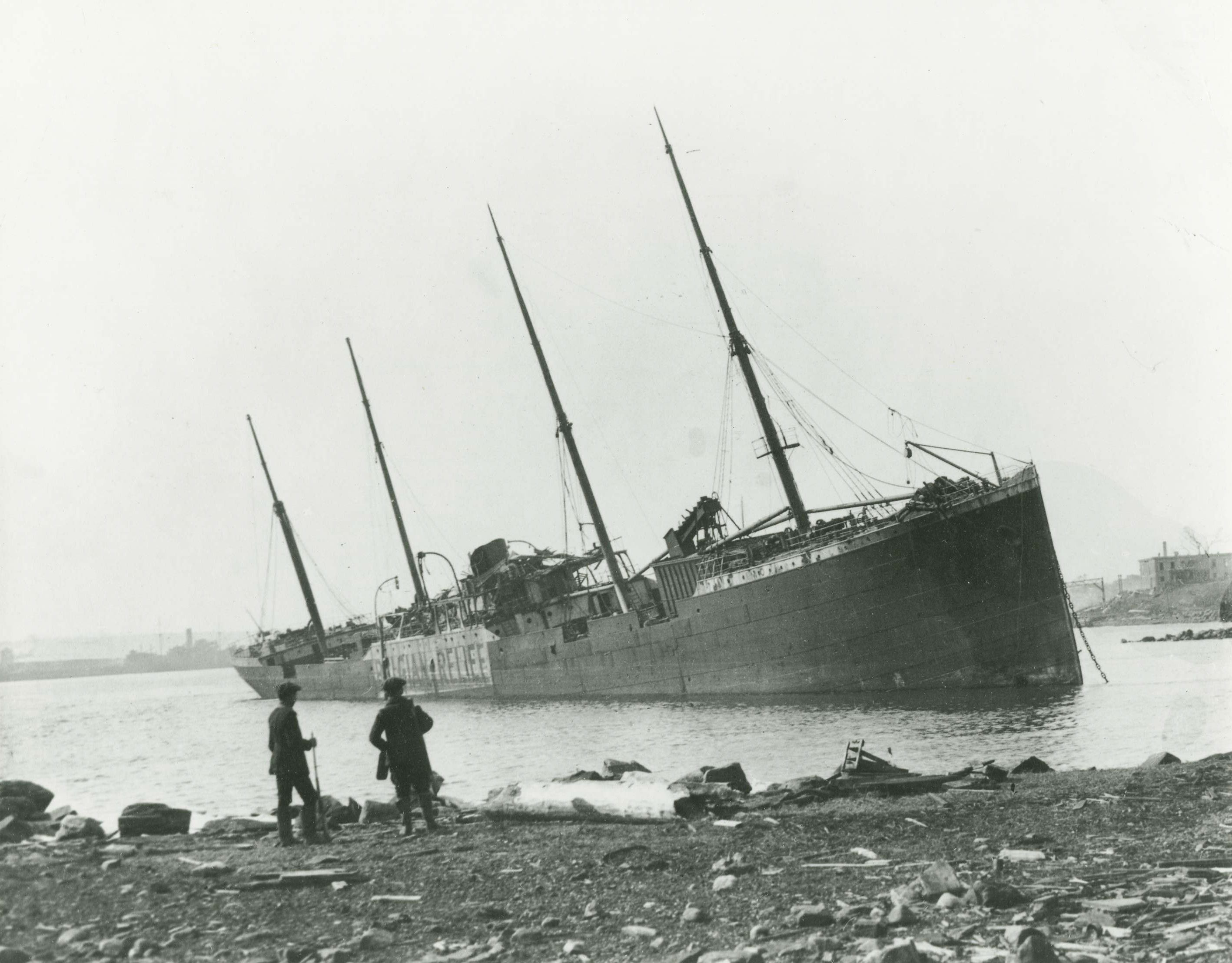
On thisday December 6 in 1917, a Belgian steamer and French freighter, both loaded with ammunition, explode in Canada’s Halifax Harbor, leveling part of the town and killing nearly 1,600 people and injuring approximately 8,000. The 8 million tons of TNT carried by the ships was intended for use in World War I.
THROWBACKTHISDAY; makes it 98 years and TBT Blog remembers.
The ships were gathered in Halifax, the meeting point for convoys to begin the dangerous Atlantic crossing, during which they were threatened by the deadly and stealthy German U-boat submarines. The HMS High Flyer was assigned to lead the convoy. The freighter from France, the Mont Blanc, had picked up a full load of TNT in New York and came into the harbor on a foggy morning. Due to the poor conditions, it collided with the Imo, a Belgian steam boat, also carrying ammunition. A fire resulted and both ships were abandoned immediately.
A British ship, the Pictou, was at a pier in the harbor and was also filled with ammunition. The crew of the Pictou immediately fled and set the ship free upon witnessing the collision. The High Flyer was the only ship that took any action to try to stop the disaster–it sent 23 men toward the collision to attempt to sink the vessels. They were too late: A massive explosion occurred just as they reached the ships.
The explosion sent burning debris throughout Halifax. It also caused a large wave to form that pushed the ships at pier right up out of the harbor. A Canadian army officer stationed at Halifax described the result, “All that could be seen for a great circumference were burning buildings, great mounds of iron and brick in the streets and dead bodies.” A 2.5- mile radius was completely demolished and the explosion could be felt 125 miles away. The wave of water hit a Navy ammunition plant located near the shores, possibly saving it from the fire.
Most other places nearby were not so lucky: The railway station collapsed from the blast and crushed scores of people inside. About 100 more were killed in a sugar plant located near the water. Of the 500 students located in schools nearby, less than 10 survived. In all, the death toll was somewhere between 1,200 and 4,000, but no one knows for sure because so much of the city was completely obliterated. Many more might have died except for a snowstorm later that day that helped put out the flames. Still, 25,000 people were left homeless in the wake of the disaster.
THROWBACKTHISDAY; makes it 98 years and TBT Blog remembers.
No comments:
Post a Comment